
The Enchanting Sierra de los Caracoles
Discover the serene beauty and rich culture of Sierra de los Caracoles, a stunning mountain range in Uruguay perfect for nature enthusiasts and cultural explorers.
Nestled in the heart of Uruguay, Sierra de los Caracoles is a haven for nature lovers and adventure seekers alike. This stunning mountain range offers breathtaking landscapes, lush greenery, and a sense of serenity that is hard to find elsewhere. With its rolling hills and diverse wildlife, Sierra de los Caracoles provides an escape from the hustle and bustle of city life, making it an ideal destination for those looking to reconnect with nature. One of the highlights of Sierra de los Caracoles is its network of hiking trails that cater to all levels of fitness and experience. Whether you are an avid hiker or a casual walker, you will find a trail that suits your needs. As you traverse these paths, you will be treated to panoramic views of the surrounding countryside, dotted with charming farms and quaint villages. The fresh air and peaceful atmosphere make it a perfect spot for picnics and relaxation. For those interested in local culture, the nearby towns offer a glimpse into the traditional way of life in Uruguay. You can visit local markets, sample delicious regional cuisine, and engage with friendly locals who are always eager to share their stories and traditions. The area is also known for its artisanal crafts, so be sure to pick up a unique souvenir to remember your trip by. Sierra de los Caracoles is not just a destination; it is an experience that will leave you with lasting memories.
Local tips in Sierra de los Caracoles
- Bring comfortable hiking shoes as the terrain can be uneven and rocky in some areas.
- Carry a reusable water bottle to stay hydrated during your hikes.
- Visit local markets early in the morning to get the freshest produce and handcrafted items.
- Try the local cuisine, especially dishes made with fresh, regional ingredients.
- Respect the natural environment by not leaving any trash behind and staying on marked trails.
The Enchanting Sierra de los Caracoles
Nestled in the heart of Uruguay, Sierra de los Caracoles is a haven for nature lovers and adventure seekers alike. This stunning mountain range offers breathtaking landscapes, lush greenery, and a sense of serenity that is hard to find elsewhere. With its rolling hills and diverse wildlife, Sierra de los Caracoles provides an escape from the hustle and bustle of city life, making it an ideal destination for those looking to reconnect with nature. One of the highlights of Sierra de los Caracoles is its network of hiking trails that cater to all levels of fitness and experience. Whether you are an avid hiker or a casual walker, you will find a trail that suits your needs. As you traverse these paths, you will be treated to panoramic views of the surrounding countryside, dotted with charming farms and quaint villages. The fresh air and peaceful atmosphere make it a perfect spot for picnics and relaxation. For those interested in local culture, the nearby towns offer a glimpse into the traditional way of life in Uruguay. You can visit local markets, sample delicious regional cuisine, and engage with friendly locals who are always eager to share their stories and traditions. The area is also known for its artisanal crafts, so be sure to pick up a unique souvenir to remember your trip by. Sierra de los Caracoles is not just a destination; it is an experience that will leave you with lasting memories.
When is the best time to go to Sierra de los Caracoles?
Iconic landmarks you can’t miss
Prado Park
Explore the serene beauty of Prado Park, a lush urban oasis in Montevideo filled with stunning gardens, monuments, and cultural attractions.
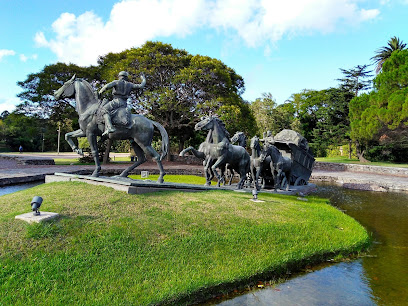
The Fingers of Punta del Este
Discover the stunning Fingers of Punta del Este, an iconic sculpture symbolizing humanity's struggle against nature, set against breathtaking coastal views.

Parque Jose Enrique Rodó
Discover the lush landscapes and cultural charm of Parque Jose Enrique Rodó, Montevideo's premier city park and a must-visit tourist attraction.

Juan Pedro Fabini Square
Explore the beauty and culture of Montevideo at Juan Pedro Fabini Square, a vibrant park perfect for relaxation and local experiences.
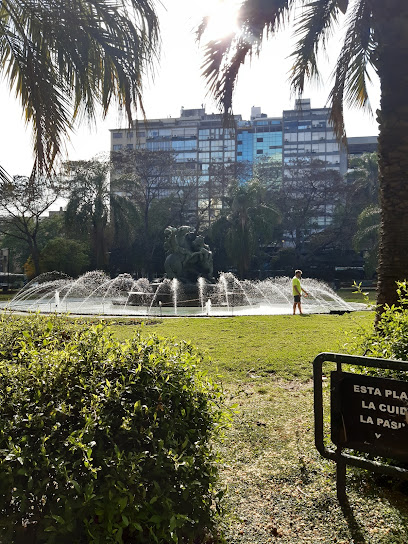
Cagancha Square
Explore Cagancha Square in Montevideo—a vibrant park featuring stunning architecture, lively street performances, and a rich cultural ambiance.
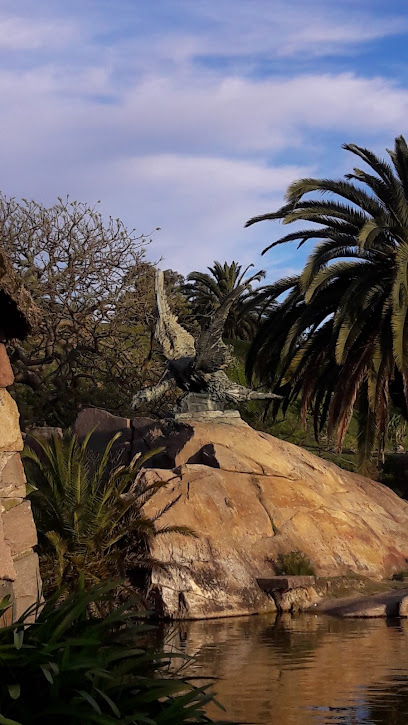
El Jagüel Park
Discover the beauty of El Jagüel Park in Punta del Este, a perfect blend of nature, tranquility, and outdoor activities for all ages.

Santa Teresa National Park
Explore the breathtaking landscapes and rich biodiversity of Santa Teresa National Park, a natural gem on Uruguay’s eastern coast.
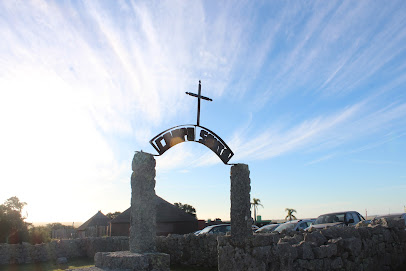
Salto del Penitente
Explore Salto del Penitente, an enchanting waterfall in Villa Serrana, Uruguay, offering breathtaking views and serene hiking trails in a tranquil natural setting.
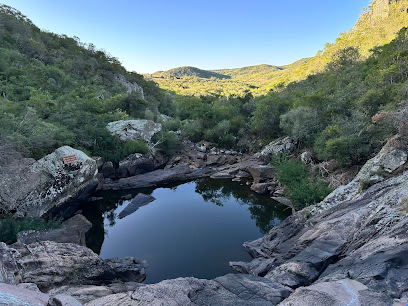
Colonia del Sacramento Lighthouse
Discover the enchanting Colonia del Sacramento Lighthouse, a historic symbol and breathtaking viewpoint in Uruguay's charming coastal city.
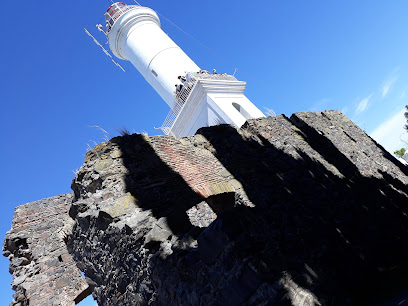
Punta Del Papu
Discover the tranquility and culinary delights of Punta Del Papu, a park and restaurant in the heart of Montevideo, perfect for relaxation and nature lovers.
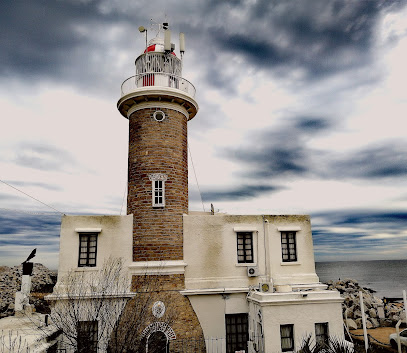
Montevideo Japanese Garden Hei Sei En 平成苑
Explore the tranquility of Montevideo Japanese Garden Hei Sei En, a serene retreat showcasing the beauty of Japanese horticulture in the heart of Uruguay.
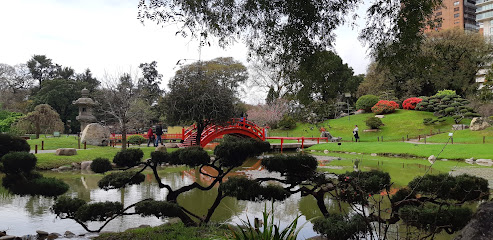
Fortress of Santa Teresa
Explore the Fortress of Santa Teresa, a historical landmark in Uruguay, blending military heritage with breathtaking coastal views and rich cultural experiences.

National Museum Of Visual Arts
Explore Uruguay's artistic heritage at the National Museum of Visual Arts, featuring iconic works and a serene atmosphere for art lovers.
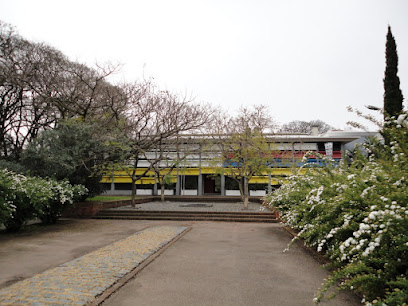
Francisco Lecocq Zoological
Discover diverse wildlife and ecological wonders at Montevideo's Francisco Lecocq Zoological Park, perfect for families and nature lovers alike!
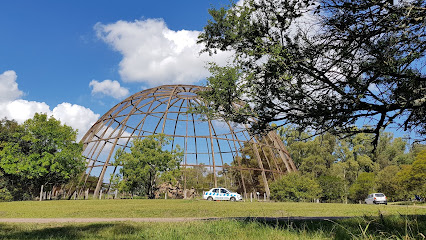
Francisco Piria Castle
Explore the majestic Francisco Piria Castle, a historical masterpiece in Piriápolis, Uruguay, offering stunning views and rich cultural heritage.
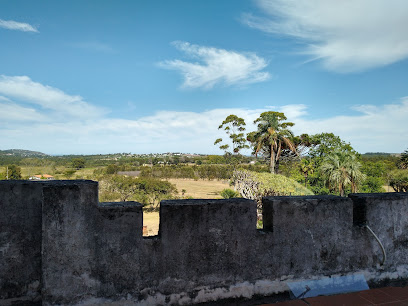
Unmissable attractions to see
Paseo y Acceso Sierra de las Ánimas
Explore the breathtaking hiking trails and rich biodiversity of Sierra de las Ánimas, a natural gem in Uruguay's Maldonado region.
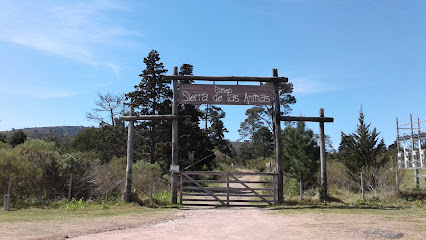
Cañadón De Los Espejos
Discover the enchanting Cañadón De Los Espejos, a stunning canyon in Uruguay that offers breathtaking views, serene hiking trails, and mesmerizing natural reflections.
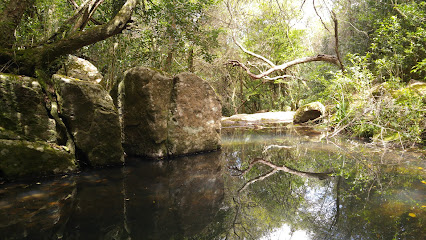
Los Chakras Granja
Explore Los Chakras Granja in Maldonado, a serene tourist attraction offering a blend of nature, sustainability, and local culture.

Las Ruinas de Rovira
Explore the captivating ancient ruins of Las Ruinas de Rovira in Faro de José Ignacio, a hidden gem rich in history and natural beauty.

Essential places to dine
Parador Imarangatu
Experience culinary excellence at Parador Imarangatu in Punta del Este, where local flavors meet international flair in an unforgettable dining atmosphere.

Miro Resto Bar
Experience the best of Uruguayan cuisine at Miro Resto Bar in Punta del Este—where flavor meets coastal charm.
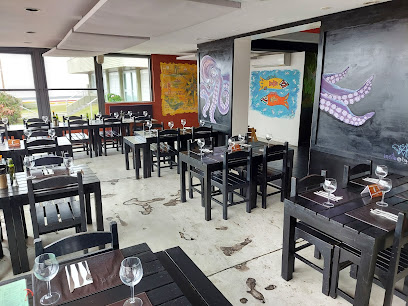
Estancia CH
Discover the culinary delights of Uruguay at Estancia CH, where exquisite flavors meet exceptional hospitality in the heart of Maldonado.
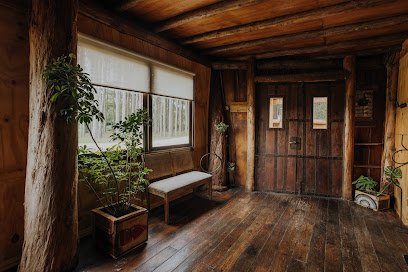
La Balsa Restaurante y Lodge
Experience exquisite dining at La Balsa Restaurante y Lodge amidst the natural beauty of Rocha, Uruguay.
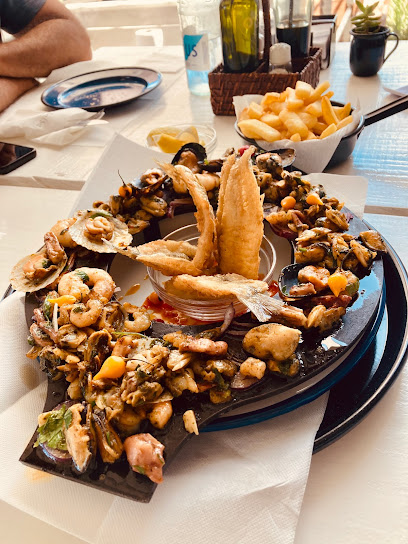
Pura Vida Resto
Experience fresh coastal flavors at Pura Vida Resto in La Barra – where every meal is a celebration of local ingredients.
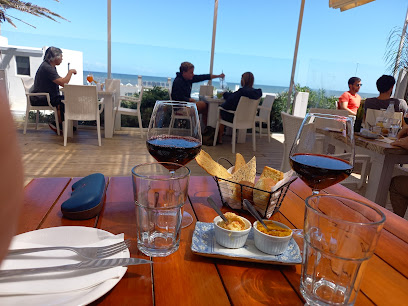
Taberna Patxi
Discover authentic Basque cuisine at Taberna Patxi in Maldonado – where each dish is crafted with passion and tradition.
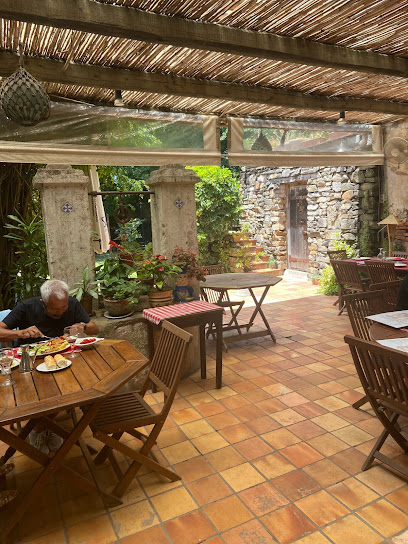
Manantiales Point
Experience the vibrant atmosphere at Manantiales Point - where delicious cuisine meets lively entertainment in Punta del Este.
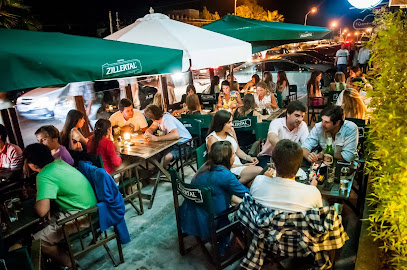
Íthaka
Discover Íthaka in Maldonado: A culinary delight offering fresh local flavors in an inviting atmosphere perfect for food lovers.
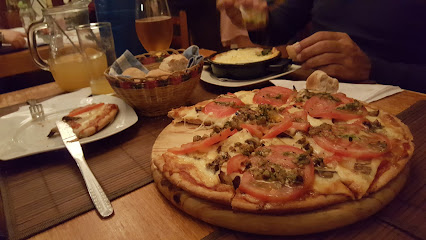
Café San Carlos
Discover authentic Uruguayan cuisine at Café San Carlos—where local flavors meet warm hospitality in beautiful Maldonado.
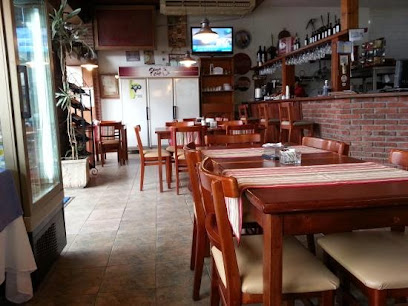
La Bourgogne
Discover the epitome of fine dining at La Bourgogne in Punta del Este, where exquisite flavors and elegant ambiance await.
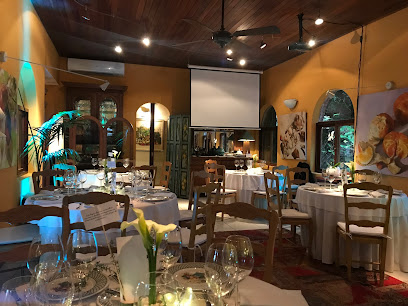
Mistura
Experience exquisite Uruguayan cuisine at Mistura in Manantiales - where fresh ingredients meet culinary artistry.

Kalhüa restaurante
Experience the rich flavors of Uruguay at Kalhüa Restaurante in Punta Ballena—where exquisite cuisine meets breathtaking coastal views.
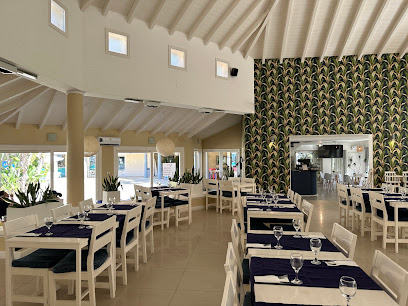
El Brocal
Discover El Brocal in Aiguá - where local flavors meet exceptional hospitality in a charming Uruguayan setting.
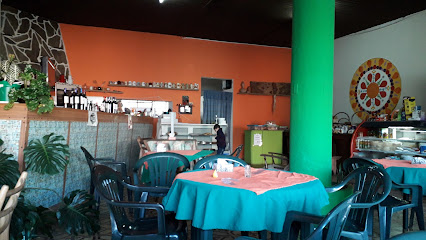
Solera Wine & Tapas Bar
Discover exquisite tapas and exceptional wines at Solera Wine & Tapas Bar in La Juanita—where culinary delights meet a cozy atmosphere.

Tommy Bistro
Experience exquisite coastal dining at Tommy Bistro, where fresh flavors meet stunning ocean views in Punta del Este.
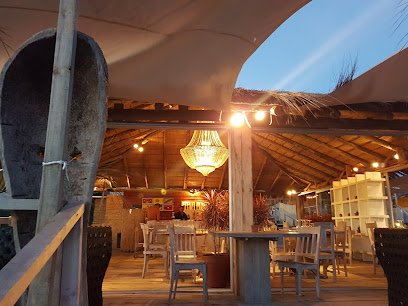
Markets, malls and hidden boutiques
Punta Shopping
Discover the vibrant shopping scene at Punta Shopping in Punta del Este, where you'll find a mix of local and international brands, dining, and entertainment.
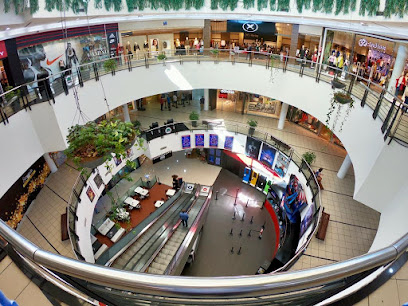
Canoa Quebrada
Discover the charm of Canoa Quebrada, a gift shop in Punta del Este offering unique local handicrafts and souvenirs that celebrate Uruguayan culture.
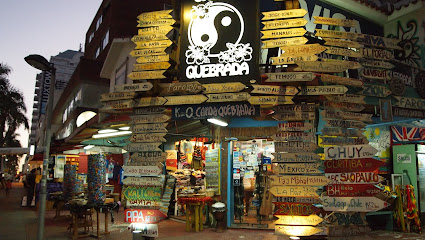
GALERIA SUR
Experience the vibrant art scene at Galeria Sur in Punta del Este, featuring exceptional works by national artists in a captivating coastal setting.
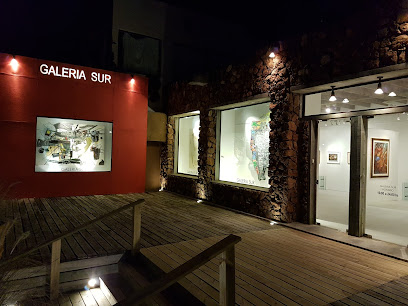
Marabierto reúne accesorios y objetos para ser la visita obligada de los amantes del diseño.
Explore Marabierto, a treasure trove of unique gifts and home goods in La Barra, where design meets functionality in stunning creations.
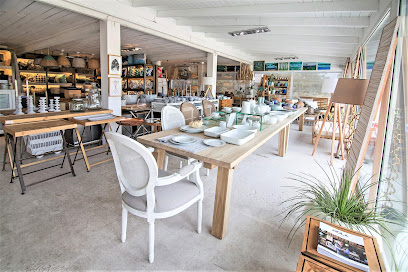
Galería Los Caracoles
Explore the vibrant artistry of Galería Los Caracoles in Faro de José Ignacio, where local talent meets contemporary creativity in a stunning coastal setting.
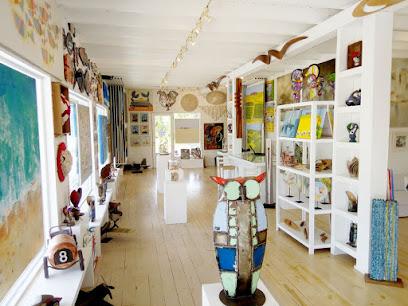
Moito Bello Regalería
Explore Moito Bello Regalería in San Carlos for unique gifts and a taste of local craftsmanship, perfect for any traveler seeking authenticity.
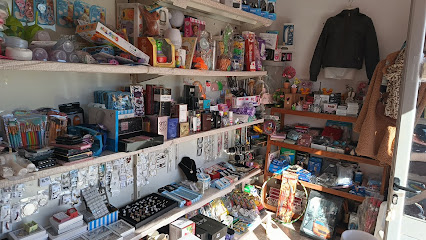
Kitty Regalería
Explore Kitty Regalería, the ultimate gift shop in San Carlos, where local craftsmanship meets unforgettable souvenirs in the heart of Maldonado.
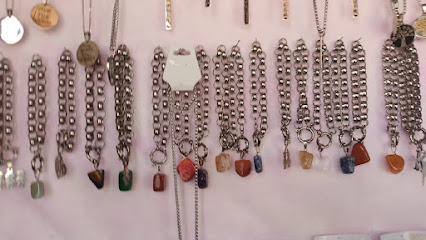
Tarjetitas Ceci
Discover unique handcrafted gifts at Tarjetitas Ceci, a charming gift shop in Maldonado offering a taste of local artistry.
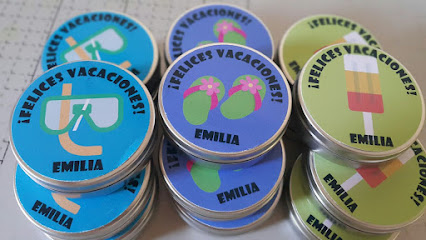
Lovoyapensar
Discover Lovoyapensar, your ultimate destination for party supplies, cake decorating tools, and creative inspiration for unforgettable celebrations.
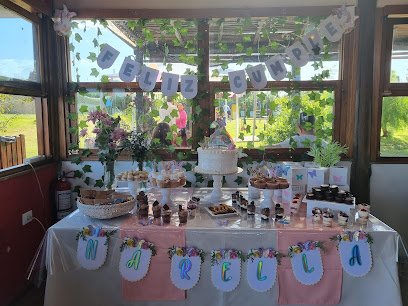
Almacén lo de Waldemar
Discover the charm of Maldonado at Almacén lo de Waldemar, your go-to store for local artisanal products and souvenirs.

ROPA DE SEGUNDA MANO EN SAN CARLOS.
Explore unique second-hand clothing treasures at Ropa de Segunda Mano in San Carlos for sustainable and stylish fashion finds.
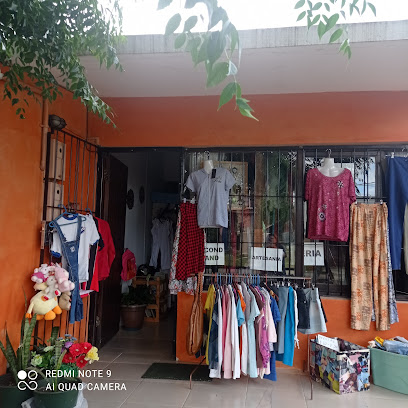
Tienda Arboretum
Explore Tienda Arboretum in Punta Ballena for unique gifts, artisan crafts, and authentic local treasures that embody the spirit of Uruguay.
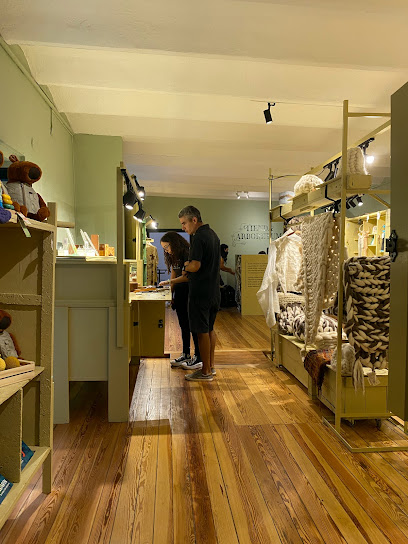
Sierra de los Caracoles
Explore the breathtaking Sierra de los Caracoles in Maldonado, a stunning mountain peak perfect for hiking and wildlife observation.
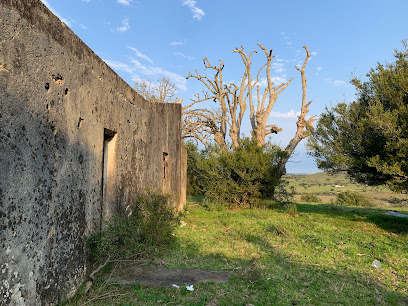
N&A Regalos
Explore unique gifts and local treasures at N&A Regalos, a must-visit gift shop in Maldonado, perfect for finding stylish accessories and souvenirs.

Sysublimaciones
Discover authentic gifts and unique souvenirs at Sysublimaciones in Maldonado, where local craftsmanship meets unforgettable experiences.
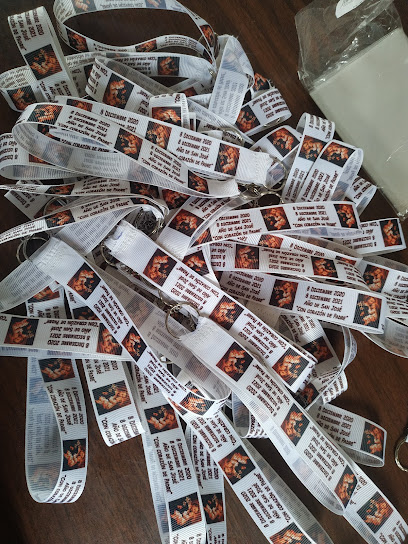
Essential bars & hidden hideouts
Parador Imarangatu
Discover the vibrant flavors of Punta del Este at Parador Imarangatu, a top bar and restaurant blending local and international cuisine.
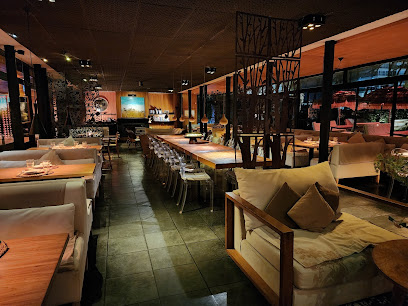
Capi Bar
Discover the vibrant atmosphere and exceptional craft beers at Capi Bar, Punta del Este's premier brewpub, where flavor meets fun.
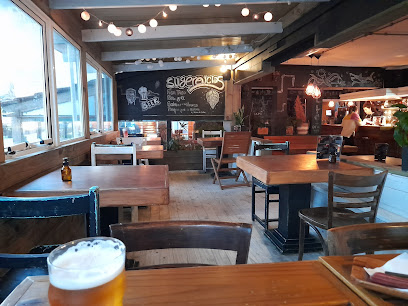
Moby Dick
Discover Moby Dick in Punta del Este, where lively ambiance meets exquisite drinks and unforgettable coastal views for an unparalleled pub experience.

Baar Fun Fun
Experience the vibrant nightlife at Baar Fun Fun, Montevideo's premier bar for live music, delicious cocktails, and a lively atmosphere.
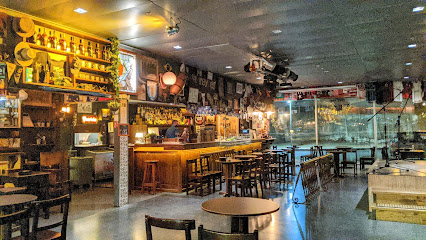
Bar Rodó Boulevard
Discover the vibrant flavors of Montevideo at Bar Rodó Boulevard, a must-visit grill and bar for food enthusiasts.

Bar Arocena
Discover the vibrant flavors of Montevideo at Bar Arocena, the ultimate destination for chivitos and local drinks in a lively atmosphere.
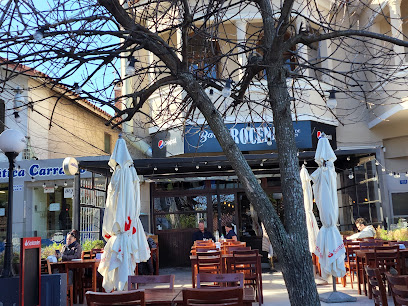
Bar Tabaré
Experience the vibrant culture of Montevideo at Bar Tabaré, where classic drinks and local ambiance come together for an unforgettable night out.
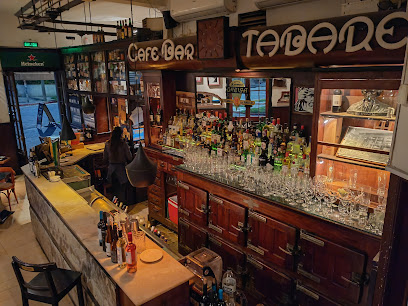
Jackson Bar
Discover the lively nightlife at Jackson Bar in Montevideo, where vibrant atmosphere and tasty drinks await every visitor.
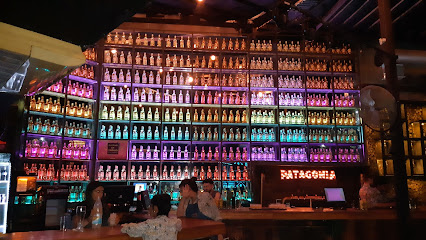
Rustic resto bar
Discover Rustic Resto Bar in Punta del Este, where fresh flavors meet a cozy atmosphere, perfect for a memorable dining experience.
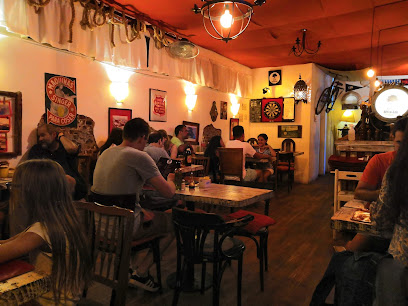
Baker's Bar
Discover the vibrant culinary scene at Baker's Bar in Montevideo, where authentic Uruguayan tapas and a lively atmosphere await.

Maldonado Bar
Discover the vibrant flavors of Maldonado Bar, Montevideo's premier pizza destination, blending a cozy pub atmosphere with excellent local cuisine.
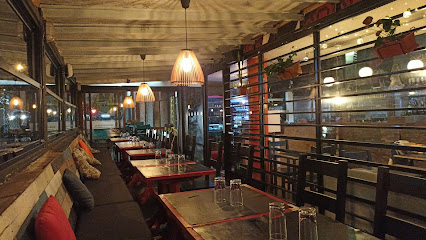
Demorondanga
Discover the vibrant flavors of Montevideo at Demorondanga, a tapas bar that brings a taste of Uruguayan culinary tradition to life.
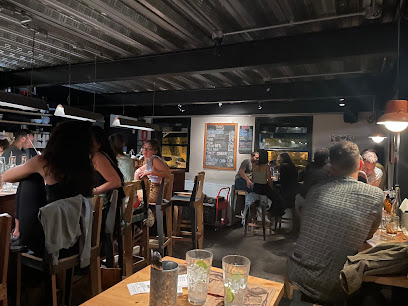
Miro Resto Bar
Discover the culinary delights of Miro Resto Bar in Punta del Este, where fresh local ingredients meet contemporary cuisine in a vibrant setting.

Volve Mi Negra
Experience the vibrant nightlife of Montevideo at Volve Mi Negra, a lively bar and disco club with delicious cocktails and electrifying music.
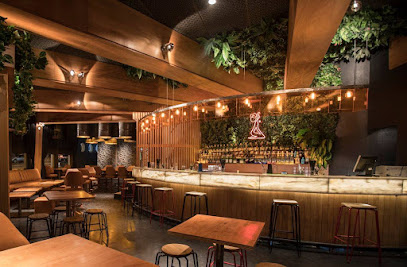
Ovo Beach
Discover the luxurious charm of Ovo Beach, where stunning views, exquisite cuisine, and vibrant nightlife await in Punta del Este.
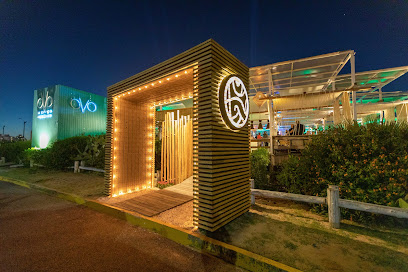
Local Phrases about Sierra de los Caracoles
-
- HelloHola
[oh-lah] - GoodbyeAdiós
[ah-dee-ohs] - YesSí
[see] - NoNo
[noh] - Please/You're welcomePor favor/De nada
[por fah-vor/de nah-dah] - Thank youGracias
[grah-see-ahs] - Excuse me/SorryDisculpe/Perdón
[dees-kool-peh/pehr-dohn] - How are you?¿Cómo estás?
[koh-moh ehs-tahs] - Fine. And you?Bien. ¿Y tú?
[byehn. ee too] - Do you speak English?¿Hablas inglés?
[ah-blahs een-glehs] - I don't understandNo entiendo
[noh ehn-tee-ehn-doh]
- HelloHola
-
- I'd like to see the menu, pleaseMe gustaría ver el menú, por favor
[meh goos-tah-ree-ah behr ehl meh-noo, por fah-vor] - I don't eat meatNo como carne
[noh koh-moh kahr-neh] - Cheers!¡Salud!
[sah-lood] - I would like to pay, pleaseMe gustaría pagar, por favor
[meh goos-tah-ree-ah pah-gahr, por fah-vor]
- I'd like to see the menu, pleaseMe gustaría ver el menú, por favor
-
- Help!¡Ayuda!
[ah-yoo-dah] - Go away!¡Fuera!
[foo-eh-rah] - Call the Police!¡Llame a la Policía!
[yah-meh ah lah poh-lee-see-ah] - Call a doctor!¡Llame a un médico!
[yah-meh ah oon meh-dee-koh] - I'm lostEstoy perdido
[ehs-toy pehr-dee-doh] - I'm illEstoy enfermo
[ehs-toy ehn-fehr-moh]
- Help!¡Ayuda!
-
- I'd like to buy...Me gustaría comprar...
[meh goos-tah-ree-ah kohm-prahr] - I'm just lookingSolo estoy mirando
[soh-loh ehs-toy mee-rahn-doh] - How much is it?¿Cuánto cuesta?
[kwan-toh kwehs-tah] - That's too expensiveEsto es demasiado caro
[ehs-toh ehs deh-mah-syah-doh kah-roh] - Can you lower the price?¿Puede bajar el precio?
[pweh-deh bah-har ehl pree-syoh]
- I'd like to buy...Me gustaría comprar...
-
- What time is it?¿Qué hora es?
[keh oh-rah ehs] - It's one o'clockEs la una
[ehs lah oo-nah] - Half past (10)Y media (10)
[ee meh-dee-ah (deez)] - MorningMañana
[mah-nyah-nah] - AfternoonTarde
[tahr-deh] - EveningNoche
[noh-cheh] - YesterdayAyer
[ah-yehr] - TodayHoy
[oy] - TomorrowMañana
[mah-nyah-nah] - 1Uno
[oo-no] - 2Dos
[dohs] - 3Tres
[trehs] - 4Cuatro
[kwah-troh] - 5Cinco
[seen-koh] - 6Seis
[sehs] - 7Siete
[syeh-teh] - 8Ocho
[oh-choh] - 9Nueve
[nweh-veh] - 10Diez
[dyehs]
- What time is it?¿Qué hora es?
-
- Where's a/the...?¿Dónde está...?
[dohn-deh ehs-tah] - What's the address?¿Cuál es la dirección?
[kwal ehs lah dee-rehk-syohn] - Can you show me (on the map)?¿Puede mostrarme (en el mapa)?
[pweh-deh mohs-trar-meh (ehn ehl mah-pah)] - When's the next (bus)?¿Cuándo es el próximo (autobús)?
[kwan-doh ehs ehl proh-ksee-moh (ow-toh-boos)] - A ticket (to ....)Un boleto (a ...)
[oon boh-leh-toh (ah)]
- Where's a/the...?¿Dónde está...?
History of Sierra de los Caracoles
-
Long before the arrival of European settlers, the Sierra de los Caracoles region was inhabited by indigenous tribes, primarily the Charrúa people. These early inhabitants utilized the natural resources of the area, engaging in hunting, fishing, and gathering. Their presence has left behind numerous archaeological sites and artifacts that provide a glimpse into their way of life.
-
During the era of European colonization, Spanish explorers ventured into the Sierra de los Caracoles, drawn by the promise of new lands and resources. The rugged terrain and rich biodiversity presented both opportunities and challenges for these early adventurers. Evidence of their journeys can still be found in the form of old trails and colonial-era artifacts scattered throughout the region.
-
The discovery of valuable minerals in the Sierra de los Caracoles during the 19th century led to a mining boom that transformed the area. Prospectors and miners flocked to the region, establishing small mining towns and extracting resources such as gold and silver. This period of intense activity left a lasting impact on the local landscape and economy.
-
The Sierra de los Caracoles played a strategic role during the various civil wars that plagued Uruguay in the 19th century. Its rugged terrain provided natural fortifications for troops and guerrilla fighters. Key battles and skirmishes took place in and around the area, and remnants of these conflicts, such as old fortifications and battlegrounds, can still be explored today.
-
In the late 19th and early 20th centuries, the Sierra de los Caracoles saw the development of rural communities centered around agriculture and livestock farming. These communities thrived on the fertile land and favorable climate, contributing to the cultural and economic fabric of the region. Traditional farming practices and rural lifestyles continue to be a hallmark of the area.
-
In recent decades, there has been a growing recognition of the ecological and cultural significance of the Sierra de los Caracoles. Efforts to preserve its natural beauty and biodiversity have led to the establishment of protected areas and conservation programs. These initiatives aim to safeguard the region's unique flora and fauna, as well as its rich historical heritage, for future generations to enjoy.
Sierra de los Caracoles Essentials
-
Sierra de los Caracoles is located in the Maldonado Department of Uruguay, approximately 140 kilometers east of Montevideo, the capital city. The nearest major airport is Carrasco International Airport in Montevideo. From Montevideo, you can rent a car or take a bus to reach Sierra de los Caracoles. The journey by car takes around 2 hours, while buses operated by companies like COT and COPSA offer regular services from the Tres Cruces Terminal in Montevideo to Maldonado, from where you can take a local taxi or bus to Sierra de los Caracoles.
-
Within Sierra de los Caracoles, transportation options include renting a car, using local taxis, or taking buses. Renting a car provides the most flexibility for exploring the area at your own pace. Local taxis are available but may be less frequent in remote areas. Buses connect the surrounding towns and cities, making it a convenient option for budget travelers. Ensure you check the bus schedules in advance as they may vary.
-
The official currency in Uruguay is the Uruguayan Peso (UYU). Credit and debit cards are widely accepted in hotels, restaurants, and larger shops. However, it is advisable to carry cash for smaller establishments and in rural areas where card payments might not be accepted. ATMs are available in nearby towns like Maldonado, so it is a good idea to withdraw sufficient cash before heading to Sierra de los Caracoles.
-
Sierra de los Caracoles is generally a safe area for tourists. However, it is important to take standard safety precautions such as keeping an eye on your belongings, especially in crowded areas. Avoid walking alone at night in secluded areas. While there are no specific high-crime areas targeting tourists in Sierra de los Caracoles, it is always best to stay vigilant and aware of your surroundings.
-
In case of emergency, dial 911 for immediate assistance. There are local police stations and medical facilities in the nearby towns of Maldonado and Punta del Este. It is recommended to have travel insurance that covers medical emergencies. Pharmacies are available in Maldonado, where you can purchase over-the-counter medications for minor health issues.
-
Fashion: Do dress comfortably for outdoor activities, but avoid overly casual attire in upscale restaurants or hotels. Religion: Do respect local customs and traditions, especially if visiting any religious sites. Public Transport: Do be punctual and respectful on public transport. Avoid eating and drinking on buses. Greetings: Do greet people with a handshake and a friendly smile. A simple 'Hola' or 'Buenos días' is polite. Eating & Drinking: Do try local dishes and beverages. Don't refuse hospitality, as it is considered impolite.
-
To experience Sierra de los Caracoles like a local, visit during the annual 'Semana de Turismo' (Holy Week) when many locals take vacations and partake in outdoor activities. Engage with locals by visiting traditional markets and trying local cuisine. Explore the scenic hiking trails and enjoy the natural beauty of the area. For a unique experience, visit the nearby town of San Carlos to immerse yourself in the local culture and history.
Trending Landmarks in Sierra de los Caracoles
-
Prado Park
-
The Fingers of Punta del Este
-
Parque Jose Enrique Rodó
-
Juan Pedro Fabini Square
-
Cagancha Square
-
El Jagüel Park
-
Santa Teresa National Park
-
Salto del Penitente
-
Colonia del Sacramento Lighthouse
-
Punta Del Papu
-
Montevideo Japanese Garden Hei Sei En 平成苑
-
Fortress of Santa Teresa
-
National Museum Of Visual Arts
-
Francisco Lecocq Zoological
-
Francisco Piria Castle







